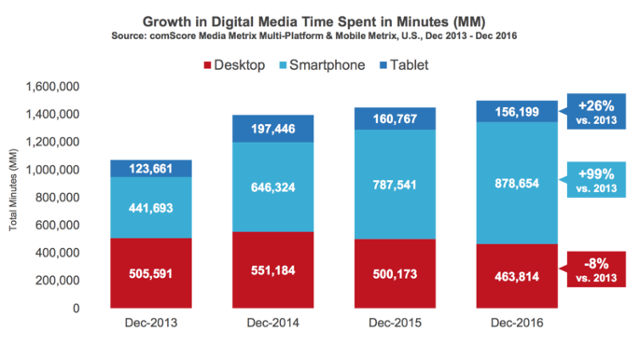— June 30, 2017
Here’s a fact you can use to impress business-minded friends at a cocktail party: Machiavelli actually was discussing the idea of “silos” back in 1513. That’s 504 years ago, and — welp! — not much has changed, as silos are still very pervasive in the business world.
One of the core problems you’re seeing in the marketing realm now is silos within silos, specifically around mobile marketing vs. digital marketing.
This is occurring at a complicated intersection point, so let’s try to define the landscape first and then help you structure your marketing team and the beginning of your mobile marketing strategy.
The marketing landscape
For years, those in managerial positions in marketing focused on brand, the value of the brand, and messaging. (There were other deliverables, but those were among the main ones.) In the last decade, though, customer experience has become more valuable than standard brand assets. Oftentimes, though, CMOs didn’t control experience — that resided under a CCO (Chief Customer) or COO (Operations). This was one concern.
Customer experience became more important because — in many industries — digital tools allowed for lower cost of entry into a market, which meant each market now suffered from “choice overload.” When you have 60 coffee options instead of six, you need a way to make the decision on what coffee to buy. Most people do this based on their experiences–their relationships–with the coffee/vendors and the price.
The final piece of the puzzle is that digital marketing got to scale very quickly, and mobile got to scale even faster. (It currently accounts for 70% of digital screen time.) Plus, many of the initial (and still to this day) digital marketing activities are not what old-school CMOs might call “direct marketing,” so the ROI isn’t apparent immediately. Social media has long suffered from this: brands do it wrong, don’t see the value, and then scrap doing it.

The organizational component
Whenever something large and new comes along in business, the business needs to find ways to assign process around it. This includes who (what team) will handle it, and what/how it looks like (the actual processes).
This is where we come to the issue of silos on top of silos. A marketing friend of mine once told me he worked in a place with teams for mobile, digital, direct, email marketing, an in-house print publication, and social media. Thus, within the marketing department, there were six separate teams, with six separate managers, most of whom didn’t regularly speak to each other. Priorities and context were incredibly hard to coordinate, and eventually (it took 18-20 months), they reduced it to 2-3 teams.
While we sometimes overlook the organizational structure component of marketing because it feels like “an HR thing,” it’s actually crucial and we need to make sure we’re getting it right.
How do we get it right with mobile marketing?
Mobile marketing should be a dedicated team within your marketing department, and the head of it should report directly to the CMO. It shouldn’t be some loose aspect of the overall digital marketing team.
Almost every conceivable customer you are trying to reach has a mobile phone in their pocket. That’s powerful enough to deserve a dedicated team of its own.
Certain aspects here get tricky. For example, where should social media management reside? The conventional idea would be under “digital marketing,” but most people now access social from their phones, so could you make a case that social/mobile need to be more aligned?
Also, what about budgeting? Mobile initiatives shouldn’t have to fight for scraps/a seat at the table from the digital budget. Mobile should have its own dedicated budget, and like any other division, you can assess how their returns are doing relative to spend each quarter/year.
If you’re wondering about specific roles, the former CMO of Hubspot thinks half your team — regardless of size — should be dedicated to top of funnel activities, i.e. content creation and lead generation.
Some final questions
How have you seen marketing teams structured? Are you still seeing mobile as a “stepchild” in some organizations despite its potential impact? What types of people do mobile marketing teams need right now?
Digital & Social Articles on Business 2 Community
(76)
Report Post





